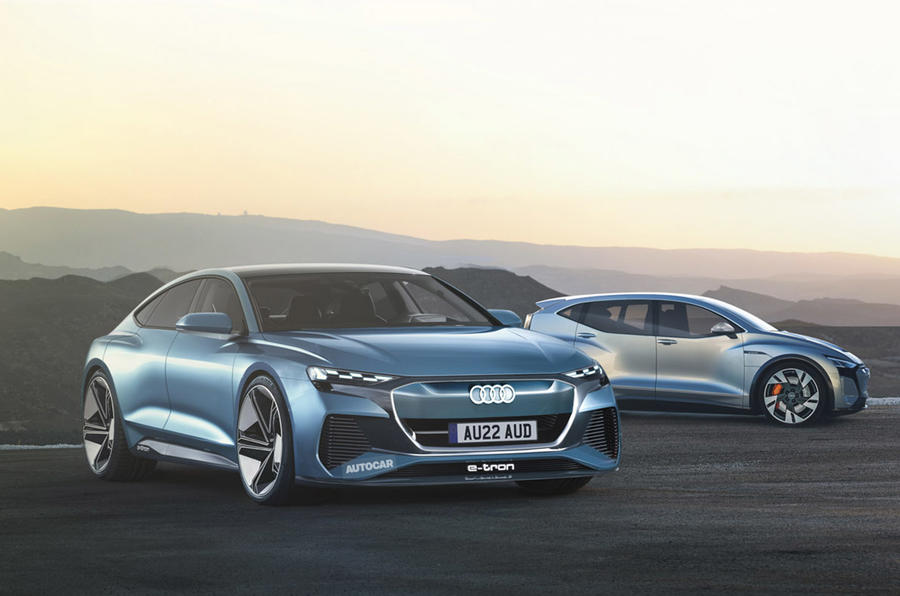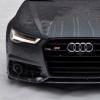Search the Community
Showing results for 'e-tron'.
-
@Biglittlebean was told that it is on the same platform as the Audi Q4 e tron, but price is at least 50-70k cheaper. Unless of course u prefer the 4 rings badge
-
The new Audi Q6 e-tron (not to be confused with the larger 7 seater version for Chinese market) marks the start of a new generation of electrically powered vehicles at Audi. With a new platform, electronics architecture, charging and battery technology, as well as a pioneering design for Audi, the Q6 e-tron paves the way to Audi's all-electric future. It is the first production model based on the Premium Platform Electric (PPE). This makes the all-electric SUV with its new E3 1.2 electronic architecture the new reference for Vorsprung durch Technik. With the Q6 e-tron series, e-mobility is coming from the Ingolstadt plant for the first time. The Q6 e-tron will compete directly with BMW upcoming iX3, which is built on a dedicated platform for Vision Neue Klasse X. Audi Q6 e-tron Quattro S Line Audi SQ6 e-tron
-
Consumer Reports’ New Annual Auto Reliability Data Reveals Safest Bets and Riskiest Choices Among New Vehicles Lexus achieves top spot among automakers in auto reliability brand ranking with Mazda, Toyota, close behind. Buick continues as the most reliable domestic brand--and the only one in top 10. https://www.consumerreports.org/media-room/press-releases/2021/11/consumer-reports-new-annual-auto-reliability-data-reveals-safest-bets-and-riskiest-choices-among-new-vehicles/ Release date 11/18/2021. YONKERS, NY — Eight of the top ten most reliable brands are from Asia, and only one--Buick--is a domestic, according to the latest Annual Auto Reliability data from Consumer Reports (CR), the nonprofit research, testing, and consumer advocacy organization. But there were some positive indicators for the domestics, too, as American models topped seven vehicle categories--an unusually strong showing. The 2021 Auto Reliability Report is based on data collected from CR members about their experiences with more than 300,000 vehicles in the annual surveys. The survey findings were announced at an online news conference before the Detroit-based Automotive Press Association today. Owners reported everything from transmissions needing replacement after as little as 5,000 miles to display screens that required hardware replacement and misaligned tailgates and doors. "With new-car prices at all-time highs and a shortage of vehicles on dealers’ lots, it’s more important than ever to consider reliability when you invest in something new,” said Jake Fisher, senior director of auto testing at Consumer Reports. “Buying a reliable vehicle can help ensure that you’ll be able to hit the road when you need to, and not worry about getting stuck waiting on parts for repairs.” Other highlights from CR’s influential annual report include the following: Despite their complexity, hybrids and plug-in vehicles are among the most reliable models. High-end electric-powered Sport Utility Vehicles are among the least reliable vehicles, but NOT because of their relatively simple powertrains. Complex electronics are their Achilles Heel, at least for now. Some Hyundai, Kia, Subaru, and Toyota models continue to have problems due to technologically advanced, and complex, transmissions. CR’s auto statisticians calculate reliability ratings for every major mainstream car, minivan, SUV, and truck on the market, even ones that are brand-new and redesigned for 2021. To do so, the team analyzes annual CR member surveys data on a model’s reliability history, calculating the brand’s overall reliability and, if applicable, the reliability of models that use some of the same components. Consumer Reports’ analysis of new-car reliability is a key element of CR’s Overall Score, which is a holistic measure of a vehicle’s quality designed to make it easy for consumers to quickly find the best cars, SUVs, and trucks to suit their needs. The Overall Score also includes road-test performance, owner satisfaction survey results, whether a vehicle comes with key active safety systems, and results from crash tests, if applicable. “The pandemic is creating a scramble for consumers as they face a reduced supply of new cars and significantly higher prices. That's why it's more important than ever that people get trusted help finding safe, secure, and reliable vehicles,” said Marta Tellado, President and CEO of Consumer Reports. “Our annual reliability reports, combined with our comprehensive auto testing, can empower consumers with the trusted information to make better purchases and navigate this unusually difficult marketplace.” Eight of the 10 Top Brands are from Asia Of the top ten most reliable automakers, eight are headquartered in Asia, with Lexus, Mazda, and Toyota in the top three spots respectively. Historically, Lexus and Toyota have regularly been at the top of CR’s brand rankings for reliability. That’s an especially noteworthy accomplishment for Toyota, which has a wide array of different nameplates in the survey--13 in all. Mazda, which was the top brand overall last year, falls to second place. Mazda’s above average overall performance was marred by the Mazda3 small car, which has average predicted reliability due to problems with its climate system and in-car electronics issues. Mazda has a conservative design approach with shared platforms and similar components, which helps it to produce reliable vehicles overall. Mazda has also stuck with its dependable six-speed automatic transmission while other automakers use more complex ones with eight or nine ratios or continuously variable transmissions, some of which have proven troublesome. All Lexus models score average or better for reliability in CR’s report. The Lexus GX SUV is the most reliable new vehicle overall this year; owners reported no problems for the three model years that CR analyzed in the brand rankings. The UX is Lexus' only average model. Third-ranking Toyota has only one model scoring below average, the Corolla Hatchback; CR’s members reported issues that required a transmission replacement or rebuild. The RAV4 remains average mostly because of problems filling the fuel tank on some versions. The Tacoma and the redesigned-for-2021 Sienna are both also average; the Sienna showed some power equipment problems. Both the RAV4 Prime and Venza, new for 2021, are well above average. Infiniti ranks fourth overall, an admirable improvement of six spots this year. The Q50 sedan remains impressive and the troublesome QX50 SUV improved to average. Buick is the most reliable domestic brand, coming in at fifth place overall. The Encore and redesigned Envision are both well-above average, and the Encore GX is above average. Surprisingly, the Enclave drops to below average, with transmission, drive system, and blank in-car electronics screen issues. High Rankings for Several Domestic Models Mark Signs of Improvement for U.S. Manufacturers Models from five domestic brands, Buick, Chevrolet, GMC, Chrysler, and Ford, take the top spots in seven categories--an unusually strong showing. They include: Buick Envision (Luxury Compact SUVs) Chevrolet Trailblazer (Subcompact SUVs) Chevrolet Silverado 2500HD and its twin the GMC Sierra 2500HD (Full-sized Pickups) Chrysler 300 (Midsized/Large Cars) Ford Bronco Sport (Compact SUVs) Ford Mustang Mach-E (Electric SUVs) Ford Ranger (Midsized Pickups) CR’s data also shows that hybrids and plug-in vehicles are among the most reliable models even though they have unusually complicated drivetrains. These vehicles include the Honda Insight, Kia Niro and the Toyota Prius, Prius Prime, RAV4 Prime, and Venza. One likely reason for their reliability is that most of these are well-established models that haven’t seen radical changes over the years. Even the new-for-2021 Venza uses a tried-and-true powertrain. The analysis also shows that fully-electric SUVs are among the least reliable vehicles. They include the Tesla Model X and Y, Audi E-Tron and Volkswagen ID.4. All have a high rate of problems in areas other than the electric powertrain. Some of these problems include climate controls, in-car electronics, and power equipment. Honda Ranks Sixth in Brand Rankings Honda ranks sixth among brands, down one from last year, with the Insight scoring well-above average. The CR-V, Accord, and Ridgeline score above average and the remaining models are all average. Both the Passport and Odyssey have improved, though owners still report issues with the infotainment system freezing and power equipment. Some Odyssey owners also report problems with the sliding doors. Subaru comes in seventh overall. The Crosstrek is well-above average, and the Legacy, Impreza, and Forester are above average. However, the Ascent still has subpar reliability. Acura's rank is eighth overall. The TLX has exhibited impressive reliability in its first year after a redesign, and the redesigned 2022 MDX has above average first-year reliability after below-average reliability with its previous generation. The RDX improves from below average to average, though it still has ongoing issues with brakes, power equipment, and in-car electronics with the display screen freezing and needing hardware replacement, and software updates failing. Nissan improves this year, moving up to ninth place--mostly because of older models including the Rogue Sport, Murano, and Leaf, which show impressive reliability. Mini rounds out the top 10, making it the highest-ranked European automaker this year. Mini only has two models in the survey, the Cooper Countryman and Cooper/Clubman, and jumps 13 places in the standing. The jump is mainly attributed to its Cooper Countryman's outstanding reliability. Hyundai falls four positions this year to rank eleventh. The redesigned Tucson is well-above average, and the Sonata and Palisade are also above average. The Kona Electric and freshened Santa Fe are below average, with, respectively, battery pack and electric drive motor problems, and transmission and power equipment issues. Kia drops three to 19th place this year, with transmissions being the brand's weak spot. The eight-speed dual clutch transmission that is used with the turbo engine in the redesigned Sorento is problematic. Owners of the Soul, Seltos, and Forte report a problem-prone CVT that could require replacement. The Niro Electric improved and the Telluride remains outstanding. Genesis’ reliability is suffering as the brand rapidly grows with new models. While the G70 has improved to average, the new GV80 SUV scores well-below average due to infotainment screen and drive system problems. Four Domestic Brands are Midpack Domestic brands are midpack or below--Chrysler at 12th, Chevrolet at 14, Cadillac at 16th, and Ford at 18th. Jeep, Tesla, and Lincoln took the three bottom ranks. Chrysler has just two vehicles in the survey--the 300, which has outstanding reliability, and the Pacifica minivan, which is well-below average due to issues including the transmission and sliding doors. Chevrolet models spread across almost the entire range of CR’s reliability scale--some excellent and some subpar. The new Trailblazer SUV and the Trax are both excellent. After years of respectable reliability, the Bolt EV dropped to below average, due to battery problems and electric drive failures, among other issues. The Silverado 2500HD and Blazer are above average. Others, including the Corvette and redesigned Tahoe, are well-below average. GMC's rank dropped because of similar problems as twin models from Chevrolet. The Sierra 1500, Yukon, and Canyon are all below- or well-below average. GMC’s only above-average vehicle was the Sierra 2500HD. Cadillac improved six spots this year, helped by the reliable XT5 SUV. The XT6 and XT4 are below- and well-below average, respectively. Ford is showing improvement this year, with the new Bronco Sport, Mustang Mach-E, and Ranger all at the top of their classes for reliability. But the redesigned F-150 scored below average, as did the Escape. Both the Mustang and the Explorer are well-below average. Ram drops the most in CR’s brand ranking this year, sliding twelve spots to 21st. While the Ram 2500 and 1500 are both average, the 1500 Classic (the previous generation 1500) has well-below average reliability marked by problems with brakes, emissions systems, engine, and power equipment. Jeep ranks 26 and among the bottom three brands. The company’s most reliable model last year, the Gladiator, fell below average. The Cherokee and Wrangler are both below average. The Wrangler has issues with the drive system, in-car electronics, and, like the similar Gladiator, with the steering and suspension. The Cherokee has in-car electronics and some transmission issues. Tesla, with four models in the survey, is unchanged at second from last. While Tesla’s Model 3 has average reliability, the Model Y still has body hardware issues with the tailgate and door alignment, paint defects, and multiple other problems. The Model X and Model S both have body hardware, climate system, and in-car electronics problems. All Lincoln models have below-average reliability, with the Corsair and Aviator being well-below average. They, along with the Nautilus, have transmission, in-car electronics and power equipment problems. Mixed Bag for European Models Porsche ranks midpack at 13, down two from last year. The Cayenne and Macan have average and above-average reliability. Audi is unchanged at 15th. The A4 and A5 remain above average, and are joined by the A6 and Q5. The Q7 is average, but the Q3 has below-average reliability. The Q8 and E-Tron, both well-below average, continue to have drive system and power equipment issues. BMW is in 17th, down four. The X5, 3 Series, 5 Series, and X3 all have average reliability, but the redesigned 4 Series has subpar reliability due to power equipment problems. Volvo is 20th overall, down one. The XC90 continues to score well-below average, mostly due to issues with brakes, climate system, and body hardware. The S60 dropped to below average this year also because of multiple issues. The XC40 is average and the XC60 is now above average. Mercedes-Benz is in 23rd, down two from last year. The only reliable model is the GLC. The E-Class fell to below average and the GLE remains well-below average, with numerous power equipment, climate system, in-car electronics, and some engine problems. Volkswagen is at 24th overall, up 1 from last year. While the Atlas and Jetta improved to average reliability, the Tiguan and the new ID.4 EV are both subpar. For more information on CR’s 2021 #CRCarReliability findings, visit CR.org/reliability or follow us on Facebook, Twitter and Instagram @consumereports. About Consumer Reports Annual Auto Reliability Surveys The latest Consumer Reports Annual Auto Reliability Surveys, gathered information from the organization's members on more than 300,000 vehicles from model years 2000 to 2021. Members filled out online surveys in the spring and summer of 2021. CR’s reliability predictions are based on overall reliability for the past three model years, provided the vehicle has not been redesigned. One or two years of data will be used if the model was redesigned in 2021 or 2020. CR bases its reliability analysis on data gathered from CR members each year about problems they had with their vehicles in the past 12 months. CR’s team of statisticians and survey researchers, then analyzed trouble areas and created an overall reliability score for each model and year. Serious problem areas that can lead to expensive repairs are more heavily weighted. More information can be found at www.CR.org.
- 28 replies
-
- 3
-

-
- consumer reports
- car reliability
-
(and 1 more)
Tagged with:
-
Audi E-Tron SQ6 looks awesome, interior design with sport padded seats, Sport steering wheel and remarkable tyre/rims, eye focused infotainment dashboard, exterior Black with linear off white interior are superior contrast. Most handsome but not that kind of price.
-
Haha 😂 on the new Audi Q6 e-tron they do have this “Pay on demand feature” want matrix-LED theres the option to pay a subscription to use that function. Not sure if it will happen in SG. 😵💫
-
Based on the Porsche Taycan, the Audi has a character all its own (and it might even be more fun). At the 2018 Los Angeles Auto Show (a time when we could all still gather around a car and discuss it clearly without masks), Audi unveiled an EV prototype that was a huge success. The name? The Audi E-Tron GT Concept. After two-plus years of waiting, the automaker is ready to debut the production-ready 2022 Audi E-Tron GT, arriving on our roads with only minor alterations from its concept predecessor. A few weeks after its official presentation, we were able to take the wheel of the model for two short hours in Reims, France, for a very preliminary "first taste," stoking our appetites for a more complete drive in the coming weeks. This was an opportunity to get a closer look at the famous platform-mate of the Porsche Taycan and to check whether the E-Tron GT upholds Audi's claim that it is indeed a different animal than its cousin from Stuttgart. Love At First Sight? Instantly, the Audi E-Tron GT wows onlookers with its spectacular design and unusual details. Although it looks much more imposing than the Taycan 4S, the two actually share the same footprint, with an identical 114.2-inch wheelbase and only marginal length and width differences – the Taycan 4S spans 195.4 inches long and 84.4 inches wide, while the Euro-spec E-Tron is up inch between the bumpers and 0.6-inch between the mirrors. But while Porsche comparisons are inevitable, it also must be said that the E-Tron is also far more dynamic-looking than the similarly sized S7 Sportback, thanks to a 0.2-inch-lower roofline and some incremental length and width increases. Customers in this type of segment are all but guaranteed to respond positively to the E-Tron GT's stance, and the wind will love it too, thanks to a drag coefficient of 0.24 (slightly up on the smoother Taycan's 0.22). Like the exterior, the cabin is no mere copy-paste of the Porsche EV, but a bona fide Audi interior. While the Taycan features up to four interior screens, the E-Tron GT makes do with two – a 12.3-inch Audi Virtual Cockpit instrument cluster and a 10.1-inch infotainment system. For our part, we find it more ergonomic, thanks in particular to the presence of physical buttons for certain shortcuts. On the other hand, as in the Taycan, we still feel a bit overwhelmed, and our tester wasn't even equipped with the optional MMI Touch secondary center display. The 2022 Audi E-Tron GT also isn't the best in terms of interior roominess, with fairly cramped rear seats. And thanks to a fairly prominent door sill (a function of the floor-mounted batteries), you'll have to contort yourself to get in. At the very least, luggage space shouldn't be an issue. This European-market E-Tron GT features a 405-liter cargo area under the rear hatch and an 81-liter frunk – that converts to 14.3 cubic feet and 2.9 cubic feet respectively, though those numbers don't necessarily correspond to official US-market measuring standards. The 2022 Audi E-Tron GT, By The Numbers This sporty (but not too sporty, since there's an RS version coming) EV has two electric motors; one mounted on the front axle makes 235 horsepower on its own, while the rear motor produces 429. Between the two, the E-Tron GT reins in 469 ponies, with a total of 464 pound-feet as well. Also, an occasional-use "overboost" function frees up 522 hp and 472 lb-ft, useful for quick passes or stoplight getaways. Audi claims a 60-mile-per-hour sprint of 3.9 seconds and a top speed of 152 mph. Like the Taycan but unlike some other EVs, the E-Tron GT has a two-speed gearbox, allowing for faster response across a wider speed range. What's more, a rear differential lock allows for better grip when exiting corners or encountering bad weather. Notably, the Audi's powertrain corresponds more closely to that of the Taycan 4S with Performance Battery Plus, eclipsing both the standard Taycan 4S and the base Taycan in terms of power and speed. Porsche won't release its grip on flagship performance though; both the Taycan Turbo and Turbo S outpace the forthcoming Audi RS E-Tron GT. As far as charging is concerned, Audi claims that taking the battery from 5 percent to 80 percent will take 22.5 minutes with a maximum charging power of 270 kW. It will take about nine hours on a standard home charging outlet to go from 0 to 100 percent. On the battery side, we have an 800-volt system, not a 400-volt system, which allows for a more consistent distribution of performance. Comprised of 33 separate modules with 12 cells each, the battery contains 396 cells for a total capacity of 93.4 kilowatt-hours. Each module has an internal control unit to manage voltage and temperature. Integrated into the cooling circuit of the car via a heat pump, the battery can be cooled or heated to be perpetually within an ideal temperature window, minimizing range degradation and prolonging battery life. Is It Really An Audi? Audi claims an EPA-rated range of 238 miles, and fortunately, after two hours of driving and one hour of photography, we didn't come close to depleting the battery. Of course, such a short drive cycle isn't enough to really evaluate the E-Tron GT's range claims (we'll need much more time for that), so we chose to spend most of our time concentrating on the EV's dynamics and driving behavior. From the very first spin, we expected the E-Tron to be a perfect copy of Porsche's Taycan, which would have been a great outcome for the firm with four rings. But we should have listened to the company representatives when they said that the Audi takes Porsche's underpinnings, but applies a different philosophy to them. You can feel within the first few blocks that, true to its name, the E-Tron is more of a GT car, with a softer suspension and more subtly tuned steering. That's not enough to make it a "soft" car, though – quite the opposite, with 469 hp to play with, the Audi is plenty fast. But while the Taycan absolutely crushes you against your seat, the E-Tron GT is a bit more docile, with less violent acceleration. That doesn't stop it from offering the driver a dynamic experience, and it's still very fun to drive. The two-speed gearing is good, and dynamic behavior is better. Thanks to some weather during our test drive, the road was particularly greasy. We weren't concerned, because if the E-Tron GT was as grounded as a Taycan, only the laws of physics could stop our enthusiasm. The tires play a key role here too, obviously. With Goodyear Eagle F1 rubber, our Audi E-Tron GT Quattro could quickly turn into a dancer, especially during overly ambitious acceleration at the exit of a curve that could result in some delightful, controllable oversteer. Not since the mid-engined R8 RWD has an Audi felt so sporty and playful. Even more surprising, the E-Tron GT is particularly fun on twisty roads, more so than a base Porsche Taycan, which will prefer to play the efficiency card. The Audi's steering is less incisive and its suspension is softer, but the result is, possibly paradoxically, more frisky and enjoyable. And all this without breaking your lumbar vertebrae at the slightest bump. That may be the mark of a true GT car – comfortable over long distances, without sacrificing the joy of making good time over a twisty, undulating road. Of course, it's hard to argue with the laws of physics too much when piloting more than 5,000 pounds of European-market EV around. Audi does its best to defeat Newton, employing rear-axle steering, an Audi Sport setting for the rear differential, and E-Quattro all-wheel drive that can power the car in rear-drive-only mode. But all that mass translates into a lot of inertia, so anticipating the road ahead is crucial. Our 2,290-kilogram (5,048-pound) test car can quickly take you where you don't want to go if you get overly ambitious. Especially since the E-Tron's braking is not what delighted us most. While the Audi RS E-Tron GT comes standard with tungsten carbide–treated brakes with 16.3-inch rotors and 10-piston calipers at the front (brakes that were introduced at Porsche some time ago), our standard Quattro version had 14.1-inch steel brake discs and six-piston calipers. Those seemingly massive brakes feel slightly undersized for such a heavy car (for sporting use, at least). Not to be catastrophic, they were adequate for most situations. Another grievance, inherent in virtually all electric cars, is the transition from regenerative braking to friction braking. The "conventional" braking system is only called upon beyond a deceleration of more than 0.39 g. This is a very complex operation, so as a result, little happens at the beginning of the pedal stroke until hydraulic braking comes into action and suddenly grips the discs. At first, it's very surprising behavior, and the lack of progressiveness hinders dynamic driving. Counting Pennies Pricing for the US-market 2022 Audi E-Tron GT hasn't been completely sussed out just yet, but we know that the base Quattro will start at $99,900 plus $1,095 for destination. The France-spec car we drove was very well equipped, with a 100,500-euro starting price bolstered by a 5,400-euro Dynamic package (Quattro differential on the rear axle, steerable rear wheels, and adaptive air suspension) and 4,600-euro carbon fiber roof – which might not be essential, since the standard E-Tron GT's center of gravity is already lower than that of the R8 supercar. Brake-wise, those aforementioned tungsten-coated discs cost an additional 4,150 euros, and they're much more suitable for dynamic use. And if steel really doesn't suit you, Audi still offers ceramic brakes as an option at 10,500 euros, but they make more sense on the high-performance RS E-Tron GT than on the less aggressive Quattro model. If you really want maximum Audi EV performance, you'll have to get in line for that RS model. With a starting price of $139,900 in the US, the RS E-Tron GT gets 590 hp (or 637 hp on overboost) and 612 lb-ft, good for a 60-mph sprint of 3.1 seconds and a top speed of 155 mph. The RS also comes standard with a carbon fiber roof, rear-axle steering, and the sport differential, making it an easier sell to those who might option the standard Quattro with those features. The E-Tron GT is built at Audi's Böllinger Höfe plant in Neckarsulm, Germany – the same facility as the R8. The first customer deliveries of the Audi EV, including the higher-performance RS version, will commence this summer in the US. Specific option pricing and packaging will be revealed closer to that nebulous on-sale date, but Audi will offer the E-Tron in $99,900 Premium Plus and $107,100 Prestige forms, with the RS E-Tron sold in a single top-dog trim level. Those prices compare favorably to the Porsche EVs: the $79,900 Taycan rear-drive, $103,800 Taycan 4S, $109,370 Taycan 4S with Performance Battery Plus, $150,900 Taycan Turbo, and $185,000 Taycan Turbo S.
-
A serious Taycan competitor is on the way but... ... official production has yet to be confirmed. Polestar 5 Touted as a GT, the five-door electric liftback won't have a rear window but that shouldn't be much of an issue given how advanced rearview cameras are nowadays. Nevertheless, some people might be put off by the absence of rear glass (just like me). It has a rakish, coupe-like roofline and a more practical tailgate compared to the Taycan and its sister model, the Audi E-Tron GT, which both have a trunk lid. Compared to the concept, it has lost the ultra-slim side cameras and suicide doors while gaining a B-pillar and smaller wheels. To be manufactured in China, this not-a-Volvo EV is slated to benefit from StoreDot's "extreme fast charging" (XFC) technology. It promises to juice up the battery enough for 100 miles (160 kilometers) of range in only five minutes without inflicting battery degradation. Prototypes will be tested with the new tech in 2024 but it remains to be seen whether it'll be available for production vehicles from day one. Polestar 6 The Polestar 6 isn’t going into production until 2026 but that doesn’t mean the automaker doesn't have exciting plans for its electric roadster. Initially, Polestar announced that it would build just 500 examples of the open-top grand tourer but it seems that it has decided to change its strategy – production will be now based on demand. And we already know the demand for the 6 is strong. Within a week after the car’s August 16 production announcement, all 500 build slots received a reservation. Reserved build slots aren’t exactly sales, but they indicate a strong interest in the production version of the electric roadster. The company’s CEO Thomas Ingenlath confirmed in a recent interview with Autocar that Polestar “would not stop at 500 if people want it.” In August this year, shortly after the debut of the Polestar 6, Ingenlath said that the first examples of the electric grand tourer will be delivered to the initial 500 reservation holders. This process will begin at some point in 2026 and once the cars are handed to their new owners, the automaker will move to regular production based on demand. Polestar’s CEO described the 6 as an electric roadster “that appeals to even the most die-hard petrolheads” and said there’s already “high interest from our customers.” At least on paper, the Polestar 6 is impressive. The roadster with a folding hardtop roof is based on the same 800-volt EV architecture that also underpins the Polestar 5. It is powered by a dual-motor powertrain, good for 884 horsepower (650 kilowatts) and 900 Newton-meters of torque. This is enough power for a 0 - 100 kilometers per hour acceleration in just 3.2 seconds. The top speed is electronically governed at 250 kph.
- 11 replies
-
- 6
-

-
- polestar
- polestar 5
-
(and 3 more)
Tagged with:
-
Hi folks! I have not seen related discussion before hence starting one. All EV drivers, please share your experiences and recommendations for tyres? I know most EVs are new in Singapore. Tesla, BYD, BMW I series, Mercedes EQ series, Audi e-tron series etc. EV cars are much heavier than ICE, tyres I guess have to use EV specific ones to achieve good comfort, performance and most importantly thread wear. I am currently driving BMW iX3, stock came with Yokohama, hence I am looking around. Explored tyrereviews and understand that Michelin , Bridgestone, Goodyear are the top 3 tyres, are they also good for EVs? Correct me if I am wrong. Hope to hear from you all! TIA
- 39 replies
-
- 2
-

-
- electric car
- evs
-
(and 6 more)
Tagged with:
-
With the introduction of the Audi e-tron, the Audi brand presents its first fully electric production model. The mid-size SUV is electrified, performance oriented and fit for every aspect of daily life. In combination with a comprehensive range of available charging solutions for home and on the move, customers can enjoy fully electric driving without compromise. The Audi e-tron is an electric SUV for sport, family and leisure. It is 193 inches long, 76.3 inches wide and 65.5 inches high. It offers the spaciousness and comfort commensurate with an Audi. With a wheelbase of 115.1 inches, the Audi e-tron has ample space for five occupants and cargo. The total luggage capacity is 28.5 cu ft. (57.0 cu ft. seats down), equipping the electric SUV for short jaunts and long road trips. Electrification visualized: the exterior design The Audi e-tron reflects the fundamental idiom of Audi design - translated into the electric age by new, stylistically refined aerodynamically focused details. Consistent with one of the brand's SUV models, the Audi e-tron bears the octagonal-design Singleframe grille with vertical struts. Its uniquely enclosed grille is presented in platinum gray - identifying it as a fully electric model. At the lower edge of the standard LED headlights, four horizontal struts, reminiscent of a charging status indicators, create the e-tron-specific signature in the daytime running lights. For the first time this is integrated directly into the headlights. Light is used as a signature design feature. Another important design element is the continuous shoulder line. It extends from the headlights, along the flanks, to the rear lights, giving the Audi e-tron a sense of stature and presence. The expressive design approach of the sill area with the black inserts on the door trim visualizes the location of the battery and thus the energy center of the Audi e-tron. Meanwhile, the roof stretches across the muscular body, which displays clear SUV attributes with its quattro blisters over the wheels and prominent D-pillars. At the sculptural rear, the long roof spoiler and wide diffuser accentuate the sporty look. One distinct element on the e-tron is the light strip connecting the LED rear taillights, consistent with the brand's D segment offerings including the Audi A7, A8 and Q8. With their horizontal emphasis, the tail lights echo the graphics of the daytime running lights that are graphical representation of full battery charge. Meanwhile the four cross-slats in the diffuser draw attention to the absence of tailpipes, another reference to the fully electric drive. Every detail matters: aerodynamics and efficiency When developing the Audi e-tron, the exterior designers worked in close collaboration with the aerodynamics experts. The result of this attention to aero is an array of high-tech efficiency solutions, such as the regulated cooling air inlet with ducts for cooling the front brakes and the adaptive, speed-dependent air suspension that is standard on the Audi e-tron. The standard-fit 20-inch wheels are aerodynamically optimized and fitted with 255/50 tires. These are especially engineered for their ultralow rolling resistance. The fully clad underbody including aluminum plate to help protect the high-voltage battery likewise plays a vital role in lowering drag. The screw connection points are recessed to deliberately create minor vortices so that the air flows even better. In addition to aerodynamics, thermal management has an important role to play. The standard equipped heat pump uses the waste heat from the electrical components - up to 3 kW of the actual power loss are used for cabin heating and air conditioning as well as cooling the electric motor. Depending on ambient temperature, the heat pump's design at can help contribute to the Audi e-tron range by up to ten percent. Highly flexible thermal management also allows fast direct-current charging to help maintain a long battery operating life and repeatable road performance. Sporty efficiency: drive and recuperation From high-efficiency to high-performance - the particularly appealing component of the Audi e-tron's drive is its breadth. The two electric motors accelerate the e-tron from 0-60 mph in 5.5 seconds and reach a top speed of 124 mph. The advantage of the electric motor is felt especially in its impressive off-the-line starting performance from a standstill. The maximum drive torque is reached in 250 milliseconds - a performance worthy of a sports car. US horsepower and torque figures will be available closer to launch. The two asynchronous motors (ASM) of the Audi e-tron are especially robust. Their sophisticated cooling concept is designed to keep the temperature level low. Single-stage transmissions transfer the torque to the axles via the differentials. Each motor is supplied by power electronics that act in close consort with the powertrain control unit. When the Audi e-tron is traveling at moderate speeds, in the interest of efficiency it is powered mainly by the rear motor. When coasting, the motors operate free from magnetic drag torque - another strength of ASM technology. The Audi e-tron uses an innovative recuperation system encompassing both electric motors, to boost efficiency. On average, our engineers estimate that this system is responsible for as much as 30 percent of the e-tron's range depending on the conditions, terrain and driving style. The electric SUV can recover energy in two ways: by means of coasting recuperation when the driver releases the accelerator, or by means of braking recuperation by depressing the brake pedal. When pressing the brake pedal, the electronic control unit computes within milliseconds how much pressure the system needs to build up for the specific braking process required. A high-performance electric motor supplies the necessary energy. The integrated brake control system is approximately 30 percent lighter than a conventional system thanks to its more compact design. The conventional vacuum pump is no longer needed in this configuration. According to the driving situation, the brake control system decides whether to use the electric motors as alternators or to use the friction brakes - all without the driver noticing. Up to 0.3 g, the Audi e-tron is decelerated solely by the electric motors - that covers over 90 percent of braking scenarios. So energy is returned to the battery in practically all normal braking instances. Above this deceleration value, for example in a full brake application, the friction brakes come into play. Thanks to a newly designed electro-hydraulic activation principle, they are particularly quick to respond. The driver can select the degree of energy recovery in three stages by means of paddles on the steering wheel. In the lowest setting, the Audi e-tron glides with no additional braking torque. At the highest stage the electric SUV is slowed more noticeably - the driver can slow down and accelerate solely via the acceleration pedal, if desired. This creates what is referred to as a one-pedal feeling. The efficiency assist additionally promotes an economical driving style by prompting the driver when he should move his foot off of the accelerator pedal. It does this by using the navigation system's route data, radar information and camera images, Depending on the traffic situation the predictive system makes the Audi e-tron slow down proactively and in turn, recuperate. Strong performance on a variety road surfaces: electric all-wheel drive and suspension In the Audi e-tron, the brand introduces a new generation of quattro drive as standard: electric all-wheel drive. This new system enables the electric SUV to achieve optimum traction in a variety of weather conditions and on challenging road surfaces. In a similar way to the mechanical quattro with ultra technology, the second axle - in this case, the one at the front - can be connected predictively. This happens if the driver requests more power than the rear electric motor can supply, or predictively even before grip noticeably declines in wintery conditions or in dynamic cornering. The electric motors are an ideal power source for the high-precision, ultrafast electric quattro. Torque can be controlled spontaneously - the output can be redistributed between the axles within a fraction of a second. Towards the limits of driving dynamics, torque vectoring enhances handling by means of brief wheel brake applications. The dynamic talents of the Audi e-tron are especially apparent on a low-friction surface, such as snow. For the first time in the e-tron, the quattro torque vectoring are integrated on the central suspension controller, distributing the torque with a slight rear bias. The innovative traction control regulates wheel slip by the millisecond directly via the electric motors' power electronics. The powertrain control unit is integrated with the built-in brake control system and helps maintain an optimum power flow between tires and road surface. Together with the electric all-wheel drive, this produces the high traction and directional stability that are typical of an Audi. This is especially evident in the four-stage Electronic Stabilization Control, which offers the "sport" and "offroad" modes and can also be fully turned off when desired. The SUV's driving character can be adjusted with the standard Audi drive select across seven profiles - from comfortable, through efficient, to distinctively sporty - according to the driving situation, road condition or personal requirements. Some of the modes also influence the standard air suspension with adaptive dampers. Depending on road speed and driving style the suspension adjusts the body's ride height by up to 76 millimeters (3.0 in). Especially on long journeys, a lower ride height improves the air flow around the body, thus helping to increase range. In the "offroad" mode, the Audi e-tron is primed for driving away from paved roads: Its ground clearance is increased by 35 millimeters (1.4 in) compared with the standard level. If the driver activates the additional function "Raise" in Audi drive select, the body can adapt to another 15 millimeters (0.6 in) higher. The electric SUV is both uniquely dynamic and stable in changing driving conditions. The low position of the drive components helps in that regard: The battery system is optimally matched to the dimensions of the Audi e-tron body and is located between the axles in the form of a flat, broad block beneath the passenger compartment. That places the Audi e-tron's center of gravity a few centimeters lower down than in a conventional SUV. The axle load distribution is balanced at approximately 50:50, and self-steering behavior is neutral. The front and rear suspensions take the form of five-link designs. The standard progressive steering adjusts its ratio according to steering angle and provides speed-dependent assistance. The further the steering is turned, the more direct it becomes - this helps make the vehicle agile and precise to move with little effort. This advantage comes into play in city driving and for tight maneuvering. The optionally available trailer tow hitch can increase the Audi e-tron's versatility, for example as a sport and leisure vehicle. When equipped with the tow package, the Audi e-tron has a maximum tow rating of 4000 lbs. It can also be used for mounting a cycle carrier, for example. 95 kWh of energy: the high-voltage battery system The battery system in the Audi e-tron is located beneath the cabin and is 2.28 meters (90 inches) long, 1.63 meters (63.6 inches) wide and 34 centimeters (13.4 in) high. It comprises a total of 36 cell modules in square aluminum housings, each of which is roughly the size of a shoe box. They are arranged on two levels, known as "floors" -a longer lower floor and a shorter upper one. At market launch, each module is equipped with twelve pouch cells having a flexible outer skin of aluminum-coated polymer. The battery operates with a nominal voltage of 396 volts and stores 95 kWh of energy. A cooling system of flat aluminum extruded sections divided uniformly into small chambers has the task of maintaining the battery's high-performance operation over the long term. Heat is exchanged between the cells and the cooling system beneath them via a thermally conductive gel pressed beneath each cell module. In what is a particularly resourceful solution, the gel evenly transfers the waste heat to the coolant via the battery housing. A strong surround frame and lattice-type aluminum structure that holds the cell modules is designed to protect the battery block. A substantial aluminum plate provides protection against damage from flying stones or curbs, for instance. These measures demonstrate how the Audi engineers have developed the batter and cooling systems with safety in mind. The weight of the battery system including the housing pan with intricate crash structures is roughly 700 kilograms (1543.2 lb). It is bolted to the underbody of the Audi e-tron at 35 points. This increases the torsional rigidity of the body, which in turn integrates numerous aluminum parts such as the floor plate in the rear structure, the doors, as well as the hood and tailgate. The cabin features components made from heat-formed ultra-high-strength steel. At up to 150 kW: charging on the move and at home Designed for efficiency and integration, the e-tron is engineered for both AC and DC charging via the widespread SAE J1772 and Combined Charging System (CCS) standards. In an industry first to-date, the e-tron debuts a DC fast charging capability of up to 150 kW available at select high-speed public charging stations, this capability can deliver up-to an 80 percent charge in only approximately 30 minutes. For customers' residential charging needs, a standard 9.6 kW AC capsule charger (Level 2, 240-volt/40 amps) is provided and designed to deliver a fresh charge overnight. This charger will include plugs that can utilize both a standard 120-volt household outlet (1.2 kW) as well as a fast-speed 240-volt NEMA 14-50 outlet (9.6 kW). Audi e-tron buyers will have the opportunity to ready their homes for their all-electric SUV with available Amazon Home Services in the first-ever home charging collaboration between Amazon and an automaker. "Audi Home Charging powered by Amazon Home Services" offers e-tron buyers a fully-digital experience for in-home electric vehicle charging installations, designed to make the process of home charging set up as easy as ordering the millions of others items and services U.S. customers depend on from Amazon. Furthermore, customers can define their own personal priorities, such as charging when electricity is less expensive where available. With the myAudi app, it can be accessed from the convenience of the home. It can be used to plan, control, and monitor the charging and pre-heating/-cooling of the electric SUV. The customer can set a departure time, for example, so that the Audi e-tron is charged and/or heated/cooled at the desired time. Customers can even choose to heat or cool certain zones in the car. On cold winter days, for example, customers can turn on the optional seat heating. The app also displays charging and driving data. For charging on the go, the e-tron will be supported by a nationwide charging network, "Powered by Electrify America." By July 2019, this network will include nearly 500 fast-charging sites complete or under development throughout 40 states and 17 metro areas. Offering advanced charging, Electrify America's chargers are capable of delivering up to 350kW. With the purchase of the Audi e-tron customers will receive 1,000 kWh of charging at Electrify America sites over four years of ownership. Place of relaxation: the interior The interior of the Audi e-tron represents performance, intelligence and lightness - attributes that are manifested in an array of details. A generous arc, the wraparound dash, envelops the stepped dashboard as far around as the sculptural door trims. The entire cabin has a strong driver orientation and in addition to the central Audi virtual cockpit featuring a slim, visually free-standing display, the two MMI touch response displays are angled towards the pilot. When off, the upper screen blends almost invisibly into the large black-panel surface. In clear contrast, the lower display sits on the broad center console. The central tunnel rests on open side panels and incorporates a storage compartment, cup holders as well as the standard Audi phone box for inductive smartphone charging. This solution combines lightness with functionality. The hand rest that incorporates the gear selector appears to float above the console. The driver selects the drive position in a one-touch action with a movement of the thumb and index finger. In every equipment line, the interior of the Audi e-tron presents exceptional upholstery materials, colors, and inlays. The Audi e-tron meets our highest quality standards in terms of interior build quality and choice of materials such as the available Valcona leather seats or the natural wood inlays. The stitching on the seats creates a motif that evokes the precision of electric circuit boards. Typically full-size: spacious and comfortable Not only does the interior have an airy design, it genuinely offers ample space. The Audi e-tron offers excellent interior packaging -interior length, second-row leg room, and headroom front and rear provide comfortable seating for five adults. In the rear, there is a flat plateau instead of the center tunnel usually found in conventional models -resulting in additional space. The luggage capacity totals 28.5 cu ft, including an additional handy storage compartment beneath the front lid. This storage space is designed to accommodate the vehicle tool kit and mobile charging cable. With the rear seat backs folded down, the Audi e-tron has up to 57.0 cu ft of luggage space. The tailgate can be opened and closed electrically as standard for ease of loading, and can be operated by a foot gesture when the key is in your pocket or purse. As well as the car's spaciousness, its standard of comfort and convenience is what you would expect from a typical Audi. The standard panoramic glass sunroof helps keep the interior bright and intensifies the impression of airiness and space. In addition, four-zone automatic air conditioning is standard with the option for available air quality package. The latter helps to maintain premium air quality by means of an ionizer and aromatization, the intensity of which can be adjusted over several levels. Multi-adjustable customized contour front seats with massage function are available as well. The available contour/ambient lighting package creates highlights after dark: It illuminates surfaces softly, edges sharply, and also back-lights the e-tron badge on the dashboard. A new level: acoustics and sound With its combination of electric drive and a comfortable, sophisticated interior, the Audi e-tron creates a new feeling for mobility. Especially when driving in the city, it radiates an almost perfect sense of calm. The only sounds are from its tires and the gentle hum of the electric motors. The body has special soundproofing in all zones that could transmit noise interference and help reduce wind vibrations. This makes the Audi e-tron the perfect platform for the standard Bang & Olufsen Premium Sound System with 3D sound in the front. It allows the music to be enjoyed precisely how it was recorded. Digital world: operation and displays In keeping with the all-new Audi C and D segment portfolio, the Audi e-tron features the MMI touch response operating system. Its two large, high-resolution displays - the upper one with a diagonal of 10.1 inches and the lower one 8.6 inches - take the place of almost all conventional switches and controls. Operation is swift and simple: When the finger activates a function, it triggers a tactile and acoustic click by way of confirmation. The few remaining buttons, for example for the lights, are also available with touch response technology if desired. In the upper display, the driver controls the infotainment, telephone, navigation, and special e-tron settings - this allows the activation of a charging timer or specifying the type of desired recuperation, for example. In the lower screen text input, comfort function selections and the HVAC are all managed with the wrist resting comfortably on the gear selector lever with integrated support. The menu structure is intuitively logical and flat like on a smartphone, including freely configurable favorites and start screens. In addition, the driver can activate a wide range of functions using natural language recognition. Information on destinations and media is either available on board or can be delivered from the cloud at LTE speed. The system understands spoken commands; the dialog manager asks questions if necessary, allows corrections, offers choices, and also defers to the speaker when interrupted. Alexa has been fully integrated into the MMI system and is on board for customers to access the many of the same features and services in the Audi e-tron as they can in their home or through other Alexa-enabled devices. You can check news, weather and sports scores, order groceries and add things to your to-do list, stream music and audiobooks via Audible, Amazon Music and TuneIn. And you access the wide variety of Alexa skills. And with smart home controls, you can lock the doors, turn off the lights, and close the garage door directly from the vehicle - all you have to do is ask. The digital display and operating concept in the Audi e-tron is rounded off by the standard feature of the Audi virtual cockpit, which can be operated from the multifunction steering wheel. Its display benefits from the very high resolution of 1,920 x 720 pixels and new e-tron-specific graphics. The driver can choose between three views: In the classic view, the power meter and speedometer are presented as large dials; in the infotainment view, they appear smaller and the focus is on the navigation map. Additionally, with the standard Audi virtual cockpit plus an additional view is shown that puts the power meter center stage. The head-up display complements the displays as an option. It projects important information straight onto the windscreen. Top-caliber connectivity: navigation, Audi connect The Audi e-tron is equipped with MMI Navigation plus as standard. The top-end media center supports the high-speed data transmission through LTE Advanced with integrated Wi-Fi hotspot for passengers' mobile devices through a 6-month unlimited Audi connect PLUS trial subscription. The navigation system can make predictive destination suggestions based on previous journeys. The route is calculated both on-board in the car and online on the servers of the map and navigation provider HERE, using real-time data for the overall traffic conditions. The online services of Audi connect PRIME ideally complement the navigation system, especially the e-tron route planner. The customer can use it either in the in-car MMI touch system or in the myAudi app. In both cases they are shown the suggested route with the available charging points. The navigation system considers not only the battery's charge but also the traffic conditions and includes the required charging time in its arrival time calculation. The e-tron route planner provides charge locations as part of the route planning. Arrive more relaxed with comprehensive driver assistance systems Whether parking, in the city or on long journeys, the Audi e-tron can make life easier for its driver in life's many situations. The system at the heart of the optional Driver Assistance Package is adaptive cruise assist, which comfortably provides longitudinal and lateral control in traffic jams or at highway speeds. It supports the driver with accelerating, braking, maintaining speed, keeping distance. The system can detect lane markings, roadside structures, vehicles in adjacent lanes and vehicles driving ahead. In construction zones, the Audi e-tron automatically adapts its speed to the traffic situation, taking into account the speed limit. If the lane is too narrow to allow side-by-side driving, adaptive cruise assist enables offset driving through narrow stretches. In conjunction with efficiency assist it predictively slows down and accelerates the Audi e-tron based on its evaluation of sensor and navigation data as well as road signs. It automatically adjusts to the current speed limit, reduces the speed before corners, during turning and on roundabouts. The system can maintain a driving style that reflects the driving program selected - from every day to sporty. Driver assistance features for urban areas include intersection assist, rear cross traffic assist as well as lane change and vehicle exit warning. The 360 degree cameras provide multiple views to facilitate centimeter-precision maneuvering, while showing crossing traffic. The 3D view with freely selectable perspective is the highlight. Park steering assist eases the parking process. It steers the Audi e-tron independently into parallel parking and perpendicular parking spaces - forward or backward. The driver only has to accelerate, select the gear and brake. Operating as standard behind the driver assistance systems in the Audi e-tron is the central driver assistance controller. It continuously computes a differentiated picture of the surroundings. The required data is obtained - depending on the selected options - from up to five radar sensors, six cameras, twelve ultrasound sensors and the laser scanner. e-tron Reservation System Accompanying the debut of the e-tron, customers are now able to configure their e-tron and reserve their vehicle with a fully refundable $1,000 reservation fee ahead of delivery in mid-2019. This new Audi reservation system is part of how Audi of America will create a digital ecosystem for Audi owners to confidently go electric. After customers place a reservation, they will be able to track it online and with their local dealer. As an electric SUV that includes integrated digital tools, in-home charging solutions, and the support of Audi of America's 303 dealer partners - e-tron owners can confidently choose electric performance knowing they have the support of a full Audi ecosystem.
-
I was reading an interesting article on "things that will disappear from the auto industry by 2030" and my itchy fingers decided to compile a list of discontinued driver features we'll not be seeing soon with the rise of electric vehicles. https://motor-junkie.com/30-things-that-will-disappear-from-the-auto-industry-by-2030 Keys, Keyfobs to RFID and NFC Keycards No more physical keys with electric cars? What happens if you're locked out of your vehicle? Polestar, why so bulky? Manual Folding Side Mirrors to Auto Folding Side Mirrors to Side Mirrors with Reverse Tilt Down Cue the introduction of Virtual Wing Mirrors on one of Audi's e-tron models, essentially ditching the traditional reflective mirrors for cameras mounted outside of the vehicle, which will in turn be projected onto screens inside the car. Damn, my car doesn't even come with reverse tilt down which I think is super useful when parking. Coincidentally saw this review on the e-tron page. Sometimes less is more. Just imagine getting your fancy video side mirrors hit by lanesplitting motorcyclists or that cockeye human with eyes fixated on their phones - won't be just a flying vehicle plate lol. CD Players!!! Lexus comes to mind instantly, other than having the most comfortable carmat. Haha. I can't remember any other modern cars with inbuilt CD player still. But that's not a result of electric cars, who uses CD players still anyway? Grilles! Grilles are interesting. Some have completely ditched grilles, some have reinvented those iconic grilles into something familiar, and some, strange lol. No grilles on the Teslas. Wafer grille on the Polestar 2, still synonymous with Volvo. The newly launched BYD Atto 3. BYD e6 - Not for those with Trypophobia. In my opinion, this Mazda MX-30 looks really good. Honda-e. Too cute. Looks like my brother's cat. Lol. Volkswagen ID.4. Kia EV6. Upcoming Opel Mokka-e. I really like the big nose grille on the M3 and M4 but not working for me on the SUVs especially the BMW iX. MB EQA. Byebye exhausts. No need for fake exhausts please. TBC! Add on if you will.
- 46 replies
-
- 7
-

-
.png)
-
- driver features
- car features
-
(and 2 more)
Tagged with:
-
Wet dream for wagon lover... The Avant E-Tron shares the same dimensions as the earlier A6 Sportback E-Tron Concept. Both are 4.96 meters long, 1.96 meters wide, and 1.44 meters tall. The difference is in the rear styling where the Avant has a more angular roof to make room for the larger cargo area. The result of this sleek look is a 0.24 drag coefficient, versus 0.22 for the Sportback. The A6 Avant E-Tron Concept rides on the Premium Platform Electric (PPE), which is also underneath the forthcoming Q6 E-Tron crossover. It has an electric motor turning each axle for a total output of 469 horsepower (350 kilowatts) and 800 Newton-meters of torque. Audi isn't disclosing the exact battery capacity but indicates the figure is around 100 kilowatt-hours. The 800-volt, 270-kilowatt recharging capacity allows for getting 300 kilometers of WLTP range within as little as 10 minutes. Less than 25 minutes is necessary to take the pack from 5 to 80 percent. Depending on the powertrain, the production A6 Avant E-Tron would be able to reach 100 kilometers per hour in less than seven seconds or as quick as "well under four seconds" for high-performance models, according to the company's announcement. A rear-drive version of the electric A6 Avant would be capable of 700 kilometers on a charge.
- 20 replies
-
- 14
-

-
Available in 3 power options: Q4 35 (RWD, 52KWH battery, 341Km range, 168HP / 310Nm, 9 seconds 0 -100Km/h) Q4 40 (RWD, 77KWH battery, 520Km range, 201HP / 310Nm, 8.5 seconds 0 -100Km/h) Q4 50 (AWD, 77KWH battery, 488Km range, 295HP / 460Nm, 6.2 seconds 0 -100Km/h) Audi Q4 50 E-Tron S Line Audi Q4 Sportback 50 E-Tron S Line
-
https://www.autocar.co.uk/car-news/new-cars/audi-q4-e-tron-sportback-electric-suv-will-be-revealed-tomorrow Audi will unveil the third member of its E-tron electric car family - the Q4 E-tron Sportback SUV - tomorrow evening. The Jaguar I-Pace rival was recently seen in disguised prototype form, showing design familiarity with the larger E-tron Sportback SUV-coupé. Audi confirmed via social media that the production model will be shown at a virtual world premiere, beginning at 6:15pm UK time. Details of the new electric model are yet to be revealed, but we can glean some information about the production car from last year's Q4 E-tron concept. That's 4.59m long and 1.9m wide - slightly shorter and wider than today’s Audi Q5. Comparing the concept and spied prototype suggests the overall shape hasn’t changed dramatically. Audi claims the concept has the interior space of a larger model, thanks to the substantial 2.77-metre wheelbase and lack of a transmission tunnel. The Q4 E-tron will be the first Audi to sit on the Volkswagen Group’s MEB bespoke EV platform; the E-tron and E-tron Sportback sit atop an adapted ICE car platform. The Q4 E-tron concept has a dual-motor powertrain comprising a 202bhp, 229lb ft motor powering the rear axle and a smaller motor powering the front wheels when traction is lost or full power is requested. The total system output is put at 302bhp. That's combined with an 82kWh battery pack yielding a WLTP-certified 280-mile range and the ability to charge at up to 125kW - resulting in an 80% charge in just half an hour. Expect the production Q4 E-tron Sportback to go on sale before the end of 2021.
-
2023 Porsche Macan Electric Spied Looking Like A Diamond In The Rough source: https://www.motor1.com/news/549499/porsche-macan-ev-spy-shots/ The retractable rear spoiler is staying, but the fake exhausts are not. Nov 22, 2021 at 3:46am ET By: Adrian Padeanu Less than 20 years ago, Porsche was all about sports cars. Then the Cayenne arrived to signal Zuffenhausen's portfolio expansion, which continued with the likes of the Panamera sedan / Panamera Sport Turismo wagon and the smaller Macan crossover. Fast forward to 2021, the German high-end brand is also selling a fully electric Taycan sedan joined by a couple of zero-emissions Cross Turismo / Sport Turismo wagons, with another EV on the way. Debuting in 2022, the all-electric Macan will likely go by a fresh name to distance itself from the combustion-engined model, which is expected to go out of production as early as 2024. In the meantime, our spies have caught several prototypes of the crossover testing without a gasoline mill in the company of a white Taycan. Never mind the stickers slapped onto the front to mimic the headlights because the real ones are already visible and take after those of the Taycan and the Mission E concept before it. Interestingly, the prototypes are also carrying around an extra set of lights mounted lower in the bumper, which makes us think those are the main clusters and the upper ones are only for the daytime running lights. The prototypes are not exactly pretty what with the extra body cladding and an unusual melange of old and new body parts. We do get to see the retractable rear spoiler in action, along with Porsche's now typical fake exhaust tips it installs on electric prototypes to show Germans do have a sense of humor. The quarter window is nothing more than a sticker to hide the rear glass, and it would appear the Macan EV will have a more sloped roofline judging by the inclination of the tailgate, giving it a sportier look. There is a fair amount of extra disguise on the derrière and we're fairly certain those dotted taillights are not the final setup. The positioning of the third brake light has changed compared to the gasoline-fueled Macan where it's mounted in the roof spoiler like on virtually most cars that have a tailgate. The prototypes are riding on large 21-inch wheels wrapped in winter tires. Riding on the Premium Platform Electric (PPE) architecture, the silent Porsche Macan will be a sportier and more expensive alternative to the Q6 E-Tron as part of a tie-up between Porsche and Audi to develop the new platform. Unlike the lesser MEB hardware, PPE-based electric vehicles will accommodate rear-wheel steering, air suspension, torque vectoring, and support for 350-kW charging thanks to the 800V setup like the Taycan and E-Tron GT. PPE won't be just for crossovers as it will be used by the two brands for upper midsize and luxury class vehicles, including even wagons. Audi has already previewed an A6 E-Tron coming as a Sportback before the middle of the decade and chances are Porsche will be putting the PPE to good use on additional products beyond the electric Macan. Both the Q6 E-Tron and Macan EV will be officially unveiled later next year, with the dynamic electric duo going on sale in 2023.
-
Audi claimed that this concept is 95% representative of the final model, and the production model is expected to be unveiled in the 2nd half of 2022. Anyone noticed something familiar? Audi is resolutely pushing ahead with its "e-volution" towards electric mobility and have just unveiled the forerunner of an innovative family of fully electric, production cars - the four-door Audi A6 e-tron concept - at the Auto Shanghai 2021 show. A completely new technology architecture, the "Premium Platform Electric," or PPE for short, will serve as the technology platform for these vehicles in the future. For its part, the PPE technology will ensure that what the car's lines imply is actually translated into dynamic driving performance and everyday suitability befitting use as a primary vehicle. Specifically, this means that depending on the selected drive system and model version, an Audi A6 e-tron is expected to boast a range of more than 700 kilometers (based on the WLTP standard) in the future - and the most powerful members of the family will sprint from 0 to 100 km/h in less than four seconds. The combination of safety features and aesthetic design has always been of particular importance to Audi. That's why the small, high-resolution projectors also display warning symbols on the ground - to warn a bike rider that the car door is about to open, for example. Another four high-resolution LED projectors - inconspicuously integrated into the corners of the vehicle - generate turn signal projections. The design of these projections can be modified to address different markets and approval regions as required. The Digital Matrix LED front headlights achieve almost cinematic quality. If, for example, the Audi A6 e-tron concept is parked in front of a wall during a break to recharge the battery, the driver and passengers can pass the time playing a video game projected onto it. Instead of on a small screen in the cockpit, they'll see their respective game's virtual landscapes projected onto the wall in XXL format - and all this via the Digital Matrix LED headlights. Players can stand next to or directly in front of the vehicle for a particularly good view of the game, which is several meters wide. OK, back to my question at the start of the post...
-
What we have here, is Audi's first electric car, the e-tron! It may be one futuristic sounding name, but the car's exterior isin't necessarily that wild... oh no... But the great thing is, that conservative, SUV shape gives you plenty of room for all your luggage. With 660-litres, the Audi e-tron easily passes the auntie trolley test! But wait, there's more! As you'd expect from an Audi, the cabin of the e-tron is well-designed and functional, but there is one small little feature that can become quite irksome. Can you guess what it is? Join us in the video review below to see just how fast 560Nm of electric torque makes the Audi e-tron go! Here's a quick teaser for you...
-
https://www.autocar.co.uk/car-news/new-cars/audi-a9-e-tron-electric-luxury-saloon-due-2024 Audi is aiming to put itself at the head of the electric luxury car ranks with a new flagship model being developed by an in-house working group called Artemis. Described as “a highly efficient electric car that is scheduled to be on the road as early as 2024”, the advanced Audi is an extension of the Aicon project showcased at the 2017 Frankfurt motor show. The new electric flagship is set to be a direct rival to the upcoming Mercedes-Benz EQS and Jaguar XJ and have the latest in electric drivetrain, battery cell and autonomous driving technology. It will also have 5G connectivity functions, including extensive use of ‘car-to-X’ features, augmented reality and over-the-air upgrades. The new model has the internal codename E6 and is in the early stages of development. Insiders suggest it will take the form of a sporting saloon or liftback. It is claimed to mirror the current A7 in external dimensions but offer the internal space of the larger A8. Sources at Audi’s Ingolstadt HQ in Germany suggest it could take the A9 E-tron name into production. Once launched, it will act as a technical showcase for up to 75 electric cars and 60 plug-in hybrids already planned by Volkswagen Group brands such as Audi, Bentley, Lamborghini, Porsche, Seat, Skoda and Volkswagen as part of its €60 billion (£53.8bn) electrification strategy through to 2029. Audi has already revealed plans to launch up to 20 pure-electric and 10 plug-in hybrid models in a programme for which it has set aside up to €12bn (£10.8bn) of its planned €37bn (£33.1bn) R&D spend through to the end of 2024.
- 1 reply
-
- 1
-

-
I tested the e-tron, EQC, iX3. iX & model Y and felt the e-tron was the winner for me. However on paper it had the lowest mileage per charge.
-
Good choice. i4 is a nice car. Never considered Audi e-tron GT? Jin sexy leh
-
Audi teamed up with Marvel Studios again, with movie-goers able to expect Audi to showcase its range of electric cars in the movie Avengers: Endgame In conjunction the world premiere of Marvel's latest movie, Audi has released a spot dubbed ‘The Debriefing’ where Brie Larson a.k.a Captain Marvel sits down with a government agent as part of her re-introduction to society after multiple decades away from Earth. The two-minute plus clip is pretty amusing and we shan't spoil it for you readers by explaining it all in words. However, it is interesting to note that the production version of the e-tron won’t be featured in the movie. Instead, the e-tron Sportback Concept, as well as the e-tron GT Concept will be the ones making an appearance. Avengers: Endgame will start showing in our cinemas on 24th April.
-
The German manufacturer has announced it's to work with Block on "exclusive joint projects in the field of electric mobility" It’s been all change for Ken Block this year. First off, he ditched his Ford partnership that had been running since 2010, going back to his old chums at Subaru. And apparently, one (no doubt lucrative) manufacturer contract wasn’t enough for the DC Shoe co-founder turned tyre torturer, as he’s just joined forces with Audi. Before you get excited about Ken’s next big video featuring a 1000bhp Sport quattro warbling away and spitting flames, we should let you know that the tie-up is solely focused on electric stuff. In the press release’s words, the plan is for Block and Audi to team up for “exclusive joint projects in the field of electric mobility.” And that’s as much detail as we get for now. As far as we know, none of this affects Block’s ARA (American Rally Association) campaign with Subaru, and we should imagine Gymkhana videos will continue to feature vehicles from the Japanese manufacturer. As a reminder, last time out Block handed over the Gymkhana reins to Travis Pastrana, who thrashed around his hometown of Annapolis in a mad, carbon fibre-bodied Subaru WRX STI with 850bhp. Block will, as far as we know, be back for Gymkhana 12, and probably not in an electric Audi. He might, however, have a crack at the Dakar Rally. Audi will take on the event with its new RS Q E-Tron (below), and Block would be a headline-grabbing driver to stick behind the wheel. He’s also a dab hand at that kind of driving, having set the third fastest time during his run on the final stage of the event last year in the Extreme E Odyssey 21 prototype. In 2021 he also won the first ever Projekt E rallycross series in Sweden. Although the partnership is about all things electric, Audi did kindly let Block loose in the legendary Audi Sport quattro S1 and a DTM V8 quattro, plus the electric E-Tron Vision Gran Turismo and an RS E-Tron GT. He was (inevitably) very complimentary about the E-Tron GT, saying that “The design is exquisite with great attention to detail and a perfect finish”. He added, “The driving experience is amazing: the car is incredibly fast and handles very well. The centre of gravity is very low so you can change direction quickly.” Audi Sport managing director Julius Seebach meanwhile had this to say about the new recruit: “Electrification is a game-changer, just like quattro drive once was. With Ken Block, we’ve got exciting things in store that go perfectly with our strategy.”
-
I would prefer a real windscreen over a camera too. I remember Audi (one of the e-tron?) that didn't have real wing mirror, just side cameras. My experience with my reverse camera is when it rains and water starts to block the camera lens, cannot see properly already. So just imagine your rearview/wing "mirror" gets blocked by water... they should at design some kind of rain hood to cover the cameras...
-
Could hdb multi-storey car park collapse ? Anybody thinking about this ? Car parks could collapse under the weight of electric cars Multi-storey car parks across the country could be at risk of collapse as heavier electric vehicles put pressure on ageing infrastructure, experts have warned. Car parking experts and engineers have told The Telegraph that the growth of EV use in the UK could put pressure on car park floors, with unloved structures most susceptible to buckling. So worried are some about the ability of car parks to hold new vehicles that new guidance is being developed that will raise the weight levels for what car park floors should be able to hold. Chris Whapples, a structural engineer and car park consultant and the author of the new guidance, told The Telegraph: “I don’t want to be too alarmist, but there definitely is the potential for some of the early car parks in poor condition to collapse.” “Operators need to be aware of electric vehicle weights, and get their car parks assessed from a strength point of view, and decide if they need to limit weight.” New electric vehicles are much heavier than the average petrol or diesel car. EV batteries account for much of this, usually weighing around 500kg. EVs are much heavier than cars manufactured in the 1960s and 1970s, when many car parks were built. For example, the current Tesla Model 3 weighs 1,672kgs, compared to the 768kg Ford Cortina Mark 1. The Audi E-tron weighs 2,351kg, compared to the 770kg Vauxhall Viva, while even the Nissan Leaf weighs 1,580kg.
-

An Early Look at the 2023 Toyota Prius Prime XSE Premium
kobayashiGT posted a topic in Japanese Talk
Source: https://hypebeast.com/2023/4/toyota-prius-prime-xse-2023-early-look Toyota has just revealed its latest Prius Prime model for 2023 and, with its clear restyling and hybrid performance improvements from the previous generation, it could be the new choice for the discerning car consumer in a “sea of electricity.” The all-new Prius – which was announced earlier this year – arrived with fanfare around its substantially new design, and the Prime maximizes itself in the looks department. To summarize, the Prius Prime is sleek, with a radically raked front windshield that’s more “sports coupe” than “efficient city car.” A sloping rear roof that drops off suddenly at the hatch lip gives an almost boxy-yet-futuristic angle to the rear, while a flat rear bumper complements the front’s near-90º angled fascia. Speaking of the rear, the Prime is actually wider than the previous generation, which is a bold move from Toyota since a wider stance would actually harm efficiency. More on that and these decisions later. The Prime XSE Premium is also equipped with 19” machine-finished wheels that sit two inches lower than the previous generation. This stance and the large wheels give the appearance of aggression and again goes against the grain of efficiency, yet works well with the Prius Prime’s appeal. Sharp angular LED headlights, a low and pronounced front air dam, rear LED light bar and rear door handles at the C-pillar are other visual choices that make the new Prius Prime stand out. Inside, the cabin feels more refined and evolutionary, with driver-passenger enhancements to touch points and visuals being the main takeaway. Dashes of red – at the dashboard, shifter and even on the seats – adorned our test car’s interior that gave the rather-boring black upholstery a much needed pop. We also liked the dual digital screens, acting as the gauge cluster and infotainment center. Bonus points for all the climate controls being accessible through knobs and buttons rather than within menus, and for the volume knob too although it was a bit far for the driver to reach. The most surprising element within the cabin was the steering wheel, which felt small in hand, giving the impression that whoever designed it had handling and dare-we-say “sportiness” in mind. Performance-wise, the Prius isn’t a sports car, but has shown improvement over the last gen. Inside are two motors: a 2.0L gas-powered engine good for 150 horsepower, and a 161 hp electric motor working in conjunction. The net total of both comes to 220 hp and 139 lb-ft of torque that allows the Prius Prime to accelerate from 0-60 in 6.6 seconds – the previous Prius was up in the sevens. While not sports car territory, acceleration in six seconds is competitive against the Audi A3 e-tron Sportback at 6.5s, the BMW i3 at 6.6s and even the turbo-four cylinder Mercedes-Benz GLA 250 at 6.5s. Overall the car felt zippy when it needed to be and the power should be more than enough for most people, but certainly not for the enthusiasts. So why did Toyota create a new Prius with big wheels, a wider body and a lower stance, all of which go against the ideals of maximum efficiency? For once, the hybrid Prius is a contender against the “new norm” of electric cars you see on the road. The Prius’s design alone adds a new layer for consumers in search of a car that looks great and drives well, even if it sacrifices a bit of efficiency. Back in the early 2000s, most can remember looking at the Prius and scorning it for being bland and boring; for Toyota to flip that script and now be considered an alternative to a new defacto is invariably a bold statement, and that’s what makes the new Prius different, daring, and possibly even “cool.” The Toyota Prius Prime XSE Premium starts at $39,170 USD and begins shipping in May. If you’re looking for something from Toyota that’s no compromises, the GR Corolla is the latest in the sporty offerings department. -
Whatever the cause, i'm still waiting for PA to do some explosive deals on the e-tron....



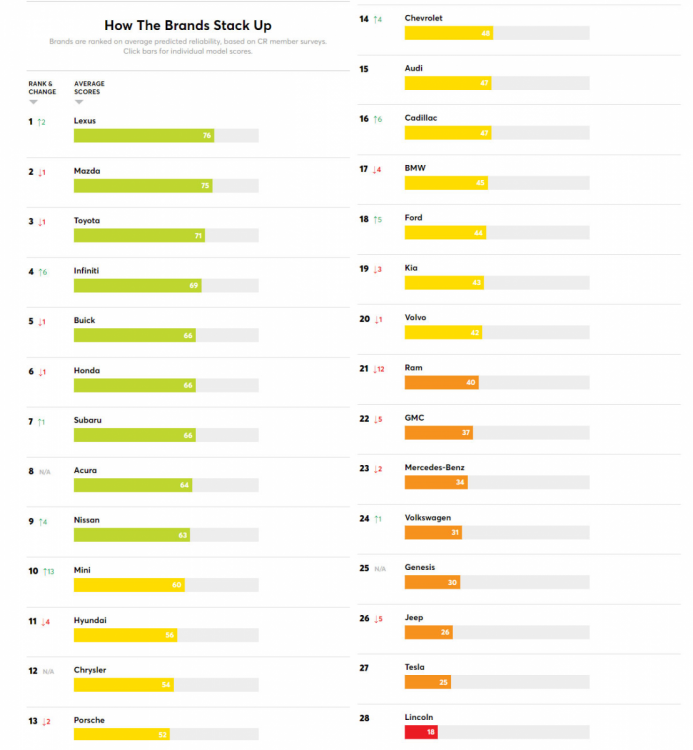




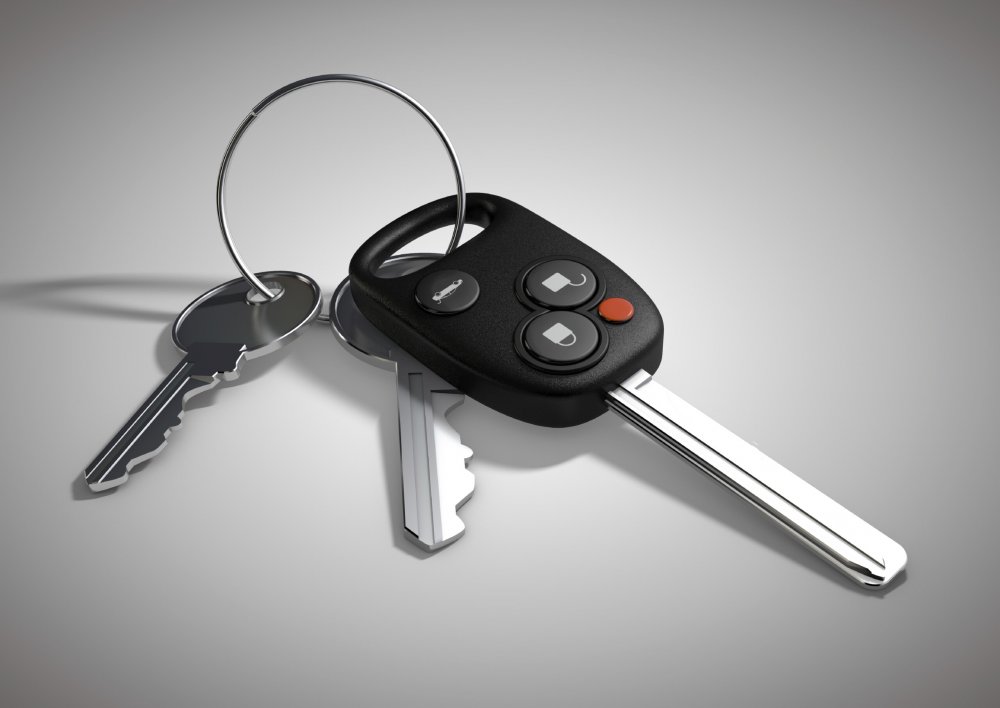




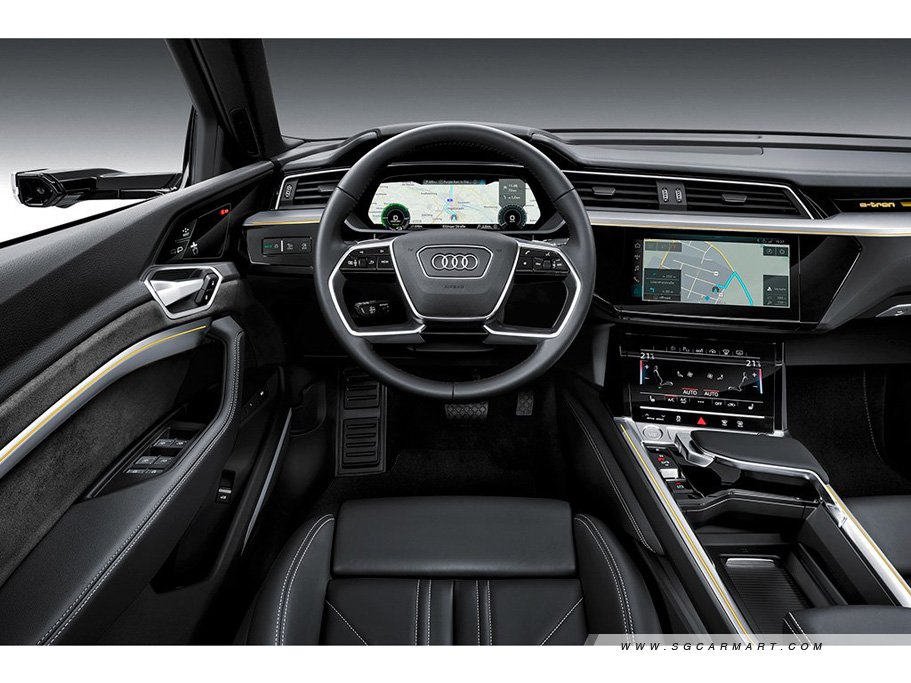

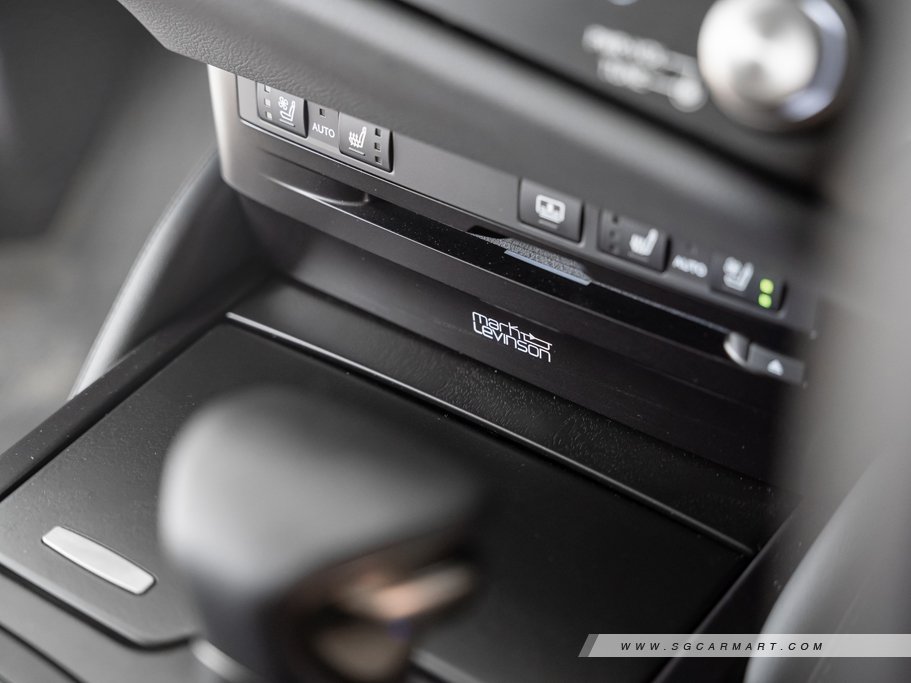
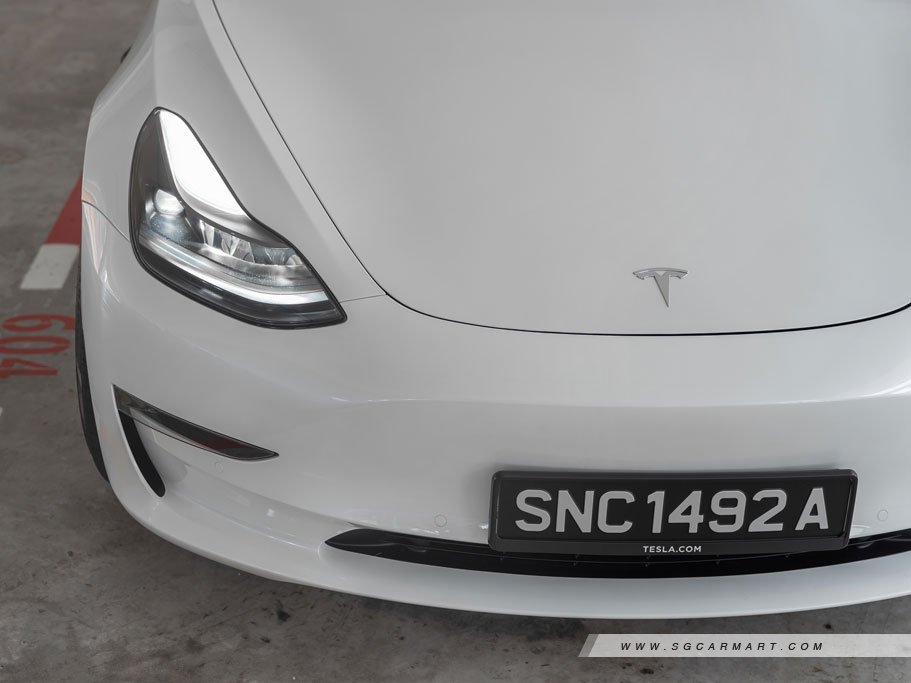

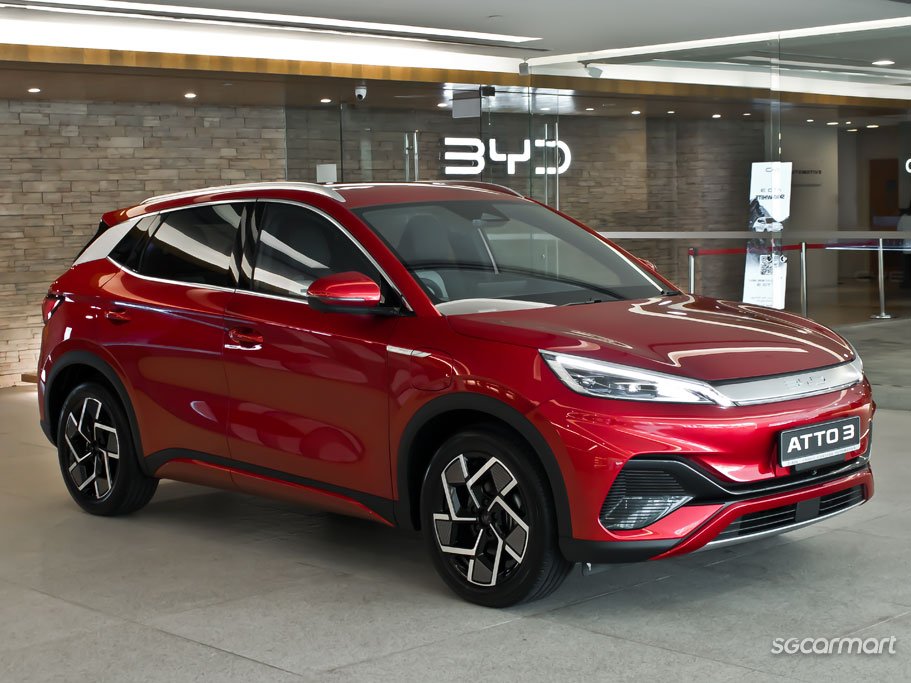
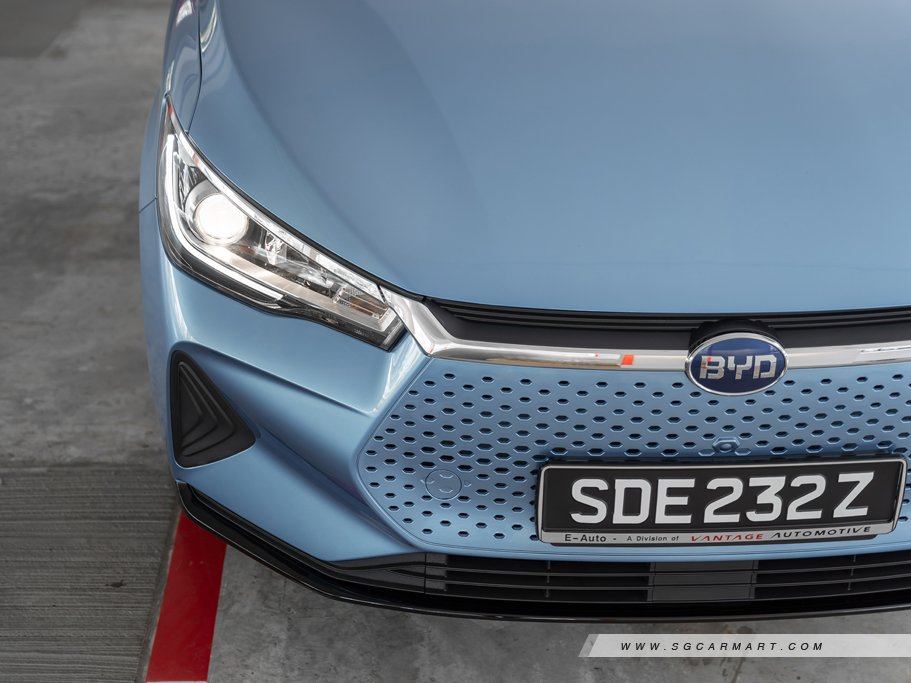


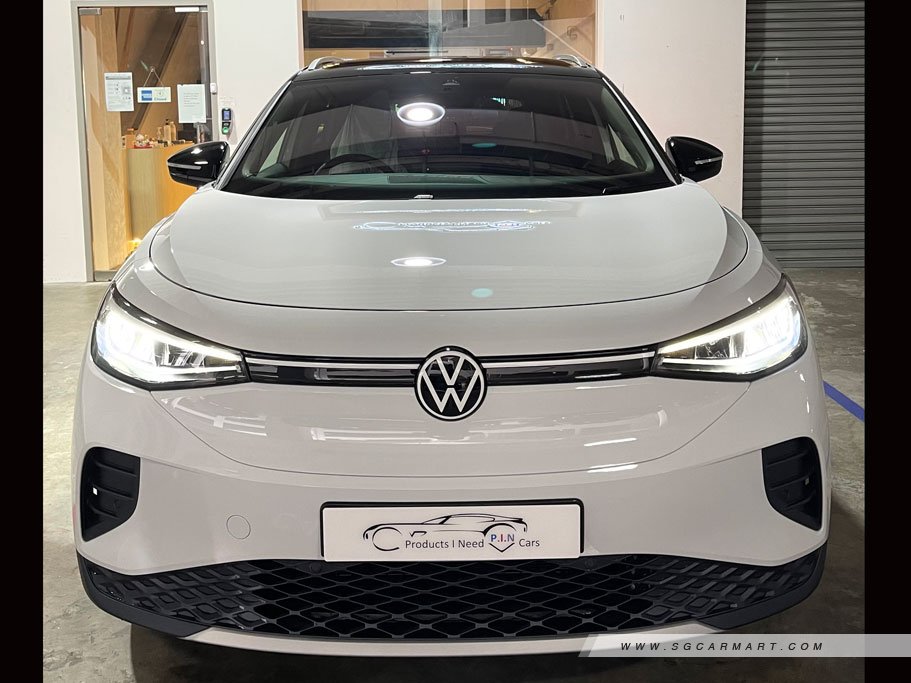
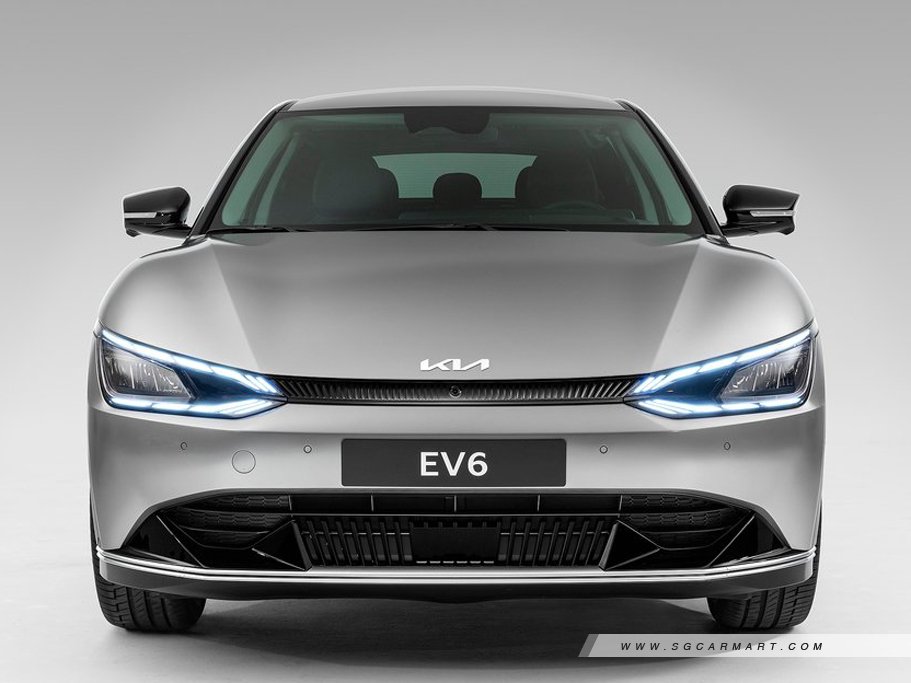

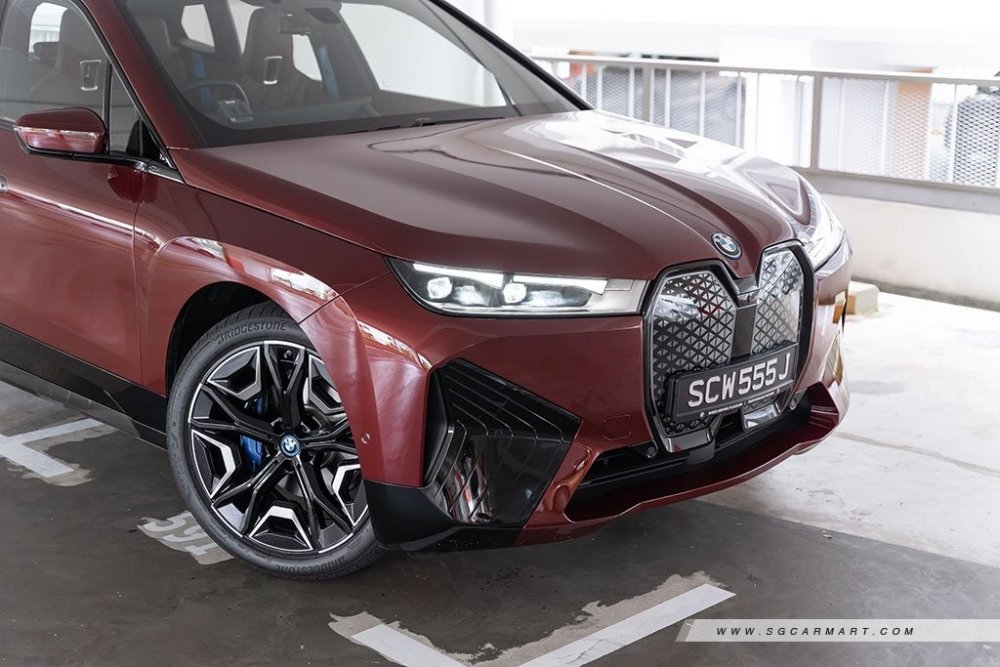
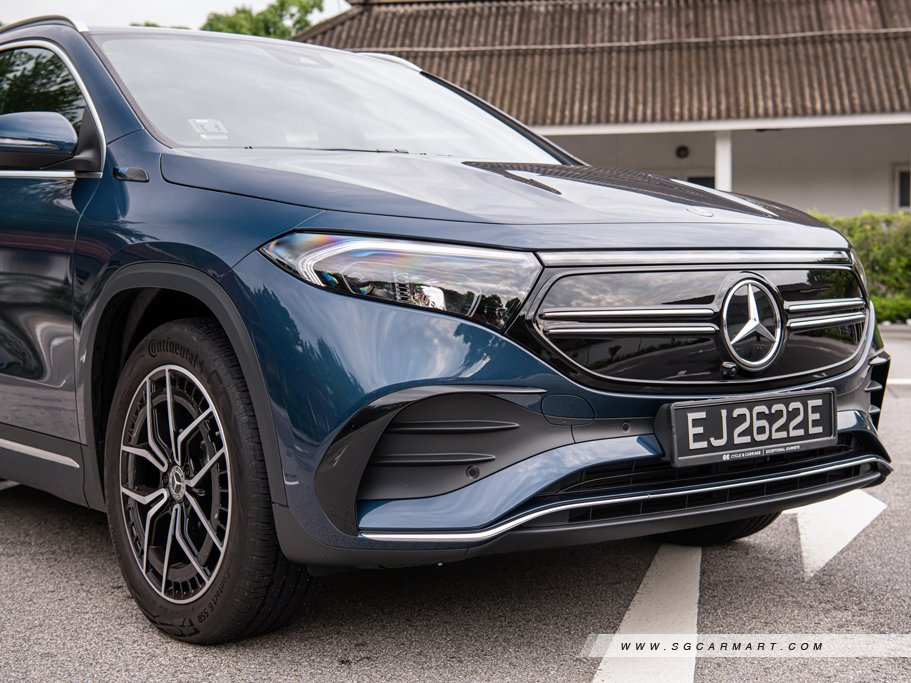



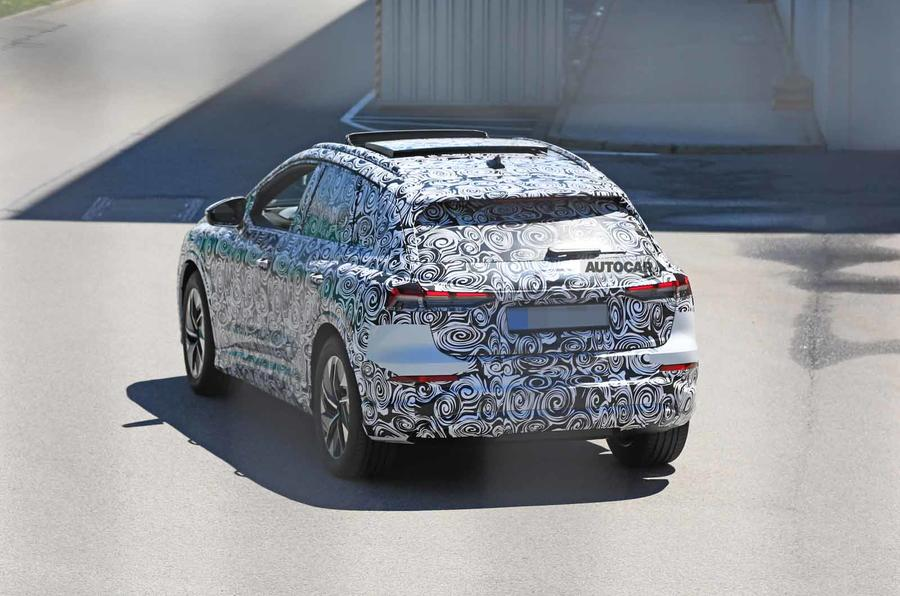

.thumb.jpg.ad73b21bc806c02745605b2692ee1992.jpg)
.thumb.jpg.b76697e1e9aafc2f5f69d8693b27c7bd.jpg)
.thumb.jpg.9fdf6686149cbdc365def5c944f48af0.jpg)
.thumb.jpg.f2a168e40703a5ec633afbe3c8a25247.jpg)
.thumb.jpg.d08dff83d9ca3a9676f6455f0320f6fe.jpg)

